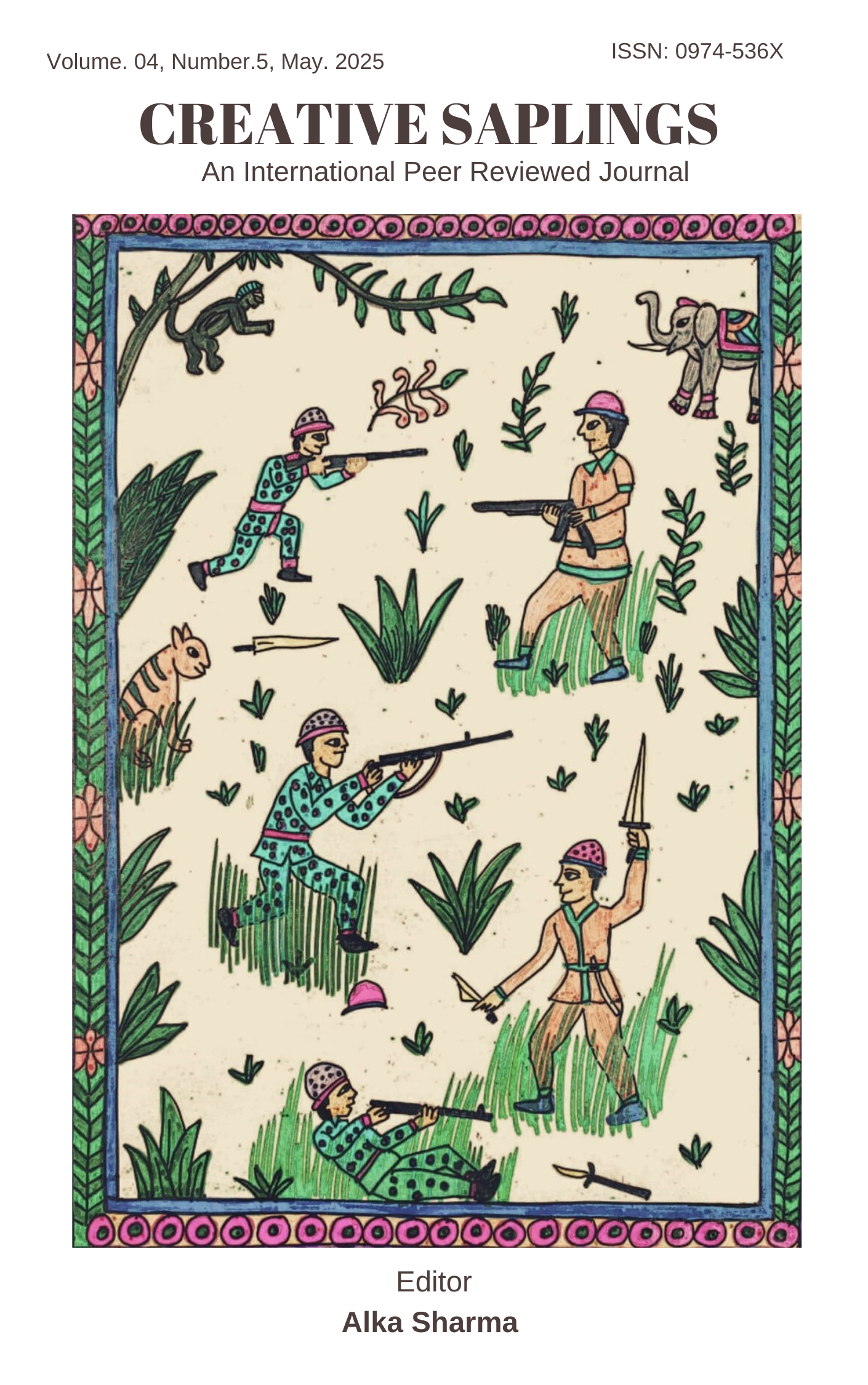Exploring Binaries: The Melding of Realistic and Gothic Elements in Emily Bronte’s Wuthering Heights
DOI:
https://doi.org/10.56062//gtrs.2025.4.05.961Keywords:
Gothic, realist, Emily Bronte, juxtaposition, binary opposites , Wuthering Heights, close reading.Abstract
This paper explores “binary oppositions” inherent in the nineteenth century English novel, as epitomised in Bronte’s Wuthering Heights, through subversion and embracing of duality. The recognition of the novel as a fictive narrative form separate from general prose narratives, coincided with the Enlightenment bringing in a strict divisioning between fact and fiction, on the heels of the rise of scientific method. Simultaneously, the Gothic emerged as a reactionary genre, navigating through this ‘scientific’ overreach into the literary. What resulted is a narrative in which the lines between the real and the fantastical blur, where the factual and the fictional cannot be easily distinguished and where one fails to differentiate between reality and imagination. Realism, as opposed to Gothic fiction, deals with the real, trying to expose or portray life as it is. Emily Bronte’s only published novel, Wuthering Heights, is a juxtaposition of the two. The paper aims to establish the premise that Bronte subverts ‘binary opposites ’ to erase the differences between the real and the fantastical. This study has applied I.A. Richard’s ‘close reading’ as an interpretive strategy and Derrida’s deconstructive method to probe beneath the surface of the apparant. In addition, the research aims to establish how Bronte utilises ‘binary opposites ’ to achieve both realistic and gothic modes of storytelling. In conclusion, the study also looks at Bronte’s adoption of the gothic to voice out social injustices, in another example of the deconstructive strategy.
Downloads
References
"2.2 Binary oppositions – Literary Theory and Criticism." Edited by Becky Bahr, Fiveable, 2024, https://library.fiveable.me/literary-theory-criticism/unit-2/binary-oppositions/study-guide/igPbOrAUGPzIPpOd. Accessed 25 Apr. 2025.
Al-Yasin, Nayef. “Social Containment in Emily Brontë’s Wuthering Heights and Charlotte Brontë’s Jane Eyre.” Damascus University Journal, vol. 34, no. 2, 2018, pp. 32-52. https://www.damascusuniversity.edu.sy/mag/human/FCKBIH/file/2-2018/31-52E.pdf
Avery, Simon. “‘Some strange and spectral dream’: The Brontës' Manipulation of the Gothic Mode.” Brontë Society Transactions, vol. 23, issue 2, Oct 1998, pp. 120-135. Taylor & Francis Online, doi:10.1179/030977698794126796.
Bensoussan, Natacha. “The Narrative Structure of Wuthering Heights: An Examination of Nelly Dean and Lockwood.” Ellipsis: A Journal of Art, Ideas, and Literature, vol. 44, article 24, 2017. Ellipsis, doi:10.46428/ejail.44.24.
Bouthaina, Boukhalat Fouzia Maamoun. A Binary Approach to Charles Dickens’ ‘A Tale of Two Cities’. 2022, Kasdi Merbah Ouargla University, Algeria. DSpace.
Bowen, John. “Wuthering Heights: Fantasy and realism.” YouTube. Uploaded by British Library, 6 Jun 2014, www.youtube.com/watch?v=fyGNVUAJvpA
Bronte, Emily. Wuthering Heights. Finger Print Classics, 2020.
Fletcher, Paul. “Wuthering Heights and Lord David Cecil”. The Use of English, pp. 105-109, https://englishassociation.ac.uk/resources-for-trainee-teachers-and-nqts/wuthering-heights-60-2/
James, Janet C. Cliffs Notes on Bronte’s Wuthering Heights. Lincoln, 1997.
Jankova, Natka. “THE STRUGGLE OF POWER AND PASSION IN WUTHERING HEIGHTS AND JANE EYRE.”Journal of Social and Human Sciences, special issue, 2014, pp. 117-125. Academia.edu., THE_STRUGGLE_OF_POWER_AND_PASSION_IN_WUT (1).pdf.
Moussaoui, Roumaissa. “Gothic Reality: A Study of Emily Bronte’s Wuthering Heights.” AWEJ for Translation & Literary Studies, vol. 5, no.3, August 2021, pp.40-54. Arab World English Journal, doi:10.24093/awejtls/vol5no3.4
Ohrvik, Ane. “What is close reading? An exploration of a methodology”. Rethinking History, vol. 28, no. 2, 2024, pp. 238–260.Routledge Taylor & Francis Group, doi:10.1080/13642529.2024.2345001.
Özkara, Nermin. The gothic tradition in the novels of the Bronte sisters: Wuthering Heights and Jane Eyre. 2011. Dissertation. T. R. Dumlupinar University Graduate School of Social Sciences Division of Western Languages and Literature. Yok Acik Bilim, https://acikbilim.yok.gov.tr/bitstream/handle/20.500.12
Punter, David, and Glenis Byron. The Gothic. Blackwell Publishing, 2004.
Richetti, John J. The Cambridge Companion to the Eighteenth-Century Novel. Cambridge University Press eBooks, 1996, doi:10.1017/ccol0521419085.
Stevens, Hannah. “Gender and the Gothic: Why Are Women That Transgress in Gothic Literature Punished?” Dissertaion. Birmingham City University, 2022, pp. 1–21. www.dumaurier.org/data/uploads/1438.pdf.
Veit, Dick. “Wuthering Heights as Cosmic Allegory.” Iowa Journal of Literary Studies, vol. 1, no. 1, Jan. 1977, pp. 111–32. University of Iowa Libraries Publishing, doi:org/10.17077/0743-2747.1009.
Downloads
Published
Issue
Section
License

This work is licensed under a Creative Commons Attribution-NonCommercial 4.0 International License.





